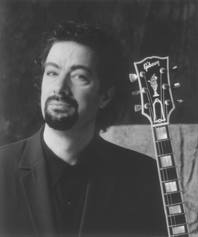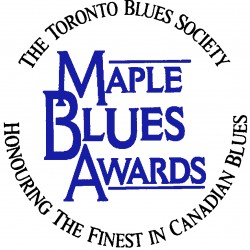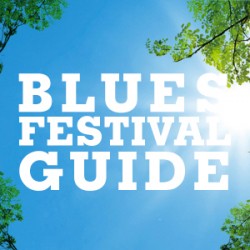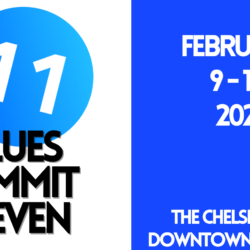Guitar City
Toronto has always been a blues town, and we’ve produced our share of great guitarists. Let’s shed a little light on the history of Toronto electric blues guitar players. There is plenty to be proud of. Some make the big time, some have their moment in the light, and some seem doomed to obscurity.
Genesis: How did the blues get this far north? How did that string bending thing come up here? I remember hearing: “Take all your regular set of strings and move them down. Through away that big old low E string, use a banjo A for your high E string, your B becomes a G, and you can push them to get that blues sound”. In the late 50’s this was a revelation and it was passed along word of mouth. Remember, this was before Guitar Player Magazine, all you got was Mel Bay!
Armed with this new information and Fender Telecaster guitars, the young players in the 60’s learned electric blues from each other and listening to L.P.’s. By this time, there actually was a Toronto sound and arrangements of blues standards like “Howlin'” and “Stormy Monday” that were indigenous to our town.
This is how I first learned blues guitar: My older brother Paul showed me the Jimmy Reed lick in E, including the turnaround, and I just practiced it. The basic 12 bar.
It’s my belief that the Toronto guitar sound of that day came about because of the major players that came up here from the States. Great men like Muddy, Jimmy Reed, Wolf, John Lee Hooker, all in their prime, even the great T.Bone Walker appeared in small clubs. I saw Muddy at a Saturday matinee’ at the Colonial, in what we would call an “all ages show”.
But it was another younger generation of players coming through town in the late 50’s and the early 60’s, that really mingled with our guys. Lonnie Mack, Roy Buchanan and Fred Carter Jr. had developed the electric guitar in the interim before the Bloomfield and Clapton explosion. It was then and there on Yonge Street that the Toronto thing came about.
Ronnie Hawkins was like John Mayall, breeding fine musicians, and Ronnie Robertson was the style leader, with his take on the Hubert Sumlin thing. Others, Bobby Star, Terry Bush and Dom Troiano were close behind, fine players all. On the cutting edge of the new blues. Freddy Keeler with the Shays, was the first one to use that sound on record. His solos were pure excitement.
At this time the great bluesman Lonnie Johnson was living and playing in Yorkville, Leon Redbone was holding court in the pool room at the Bloor subway. Also we had the great underrated, Zal Yanofsky.
By 1966, players discovered the Les Paul guitar, and another sound. The first in town to do this was Mike McKenna, he was the man. By the end of the 60’s McKenna joined with Mendelson, the belt maker. Players like Danny McBride, Peter Boyko, John Tilden, John , and Larry Goodhand seemed destined to take the sound even further, and in fact they did.
In 1969 on the first Edward Bear album, I recorded “Every day I have the Blues” on side A, and “Hideaway” on side B. “Everyday” had become my theme song but I acquired the arrangement from C.J. Feeney, you know him as Lee Van Leer, a blues man famous among the famous.
The Polyester Decade: As the 70’s began, our club scene was among the best in North America, a breeding ground for musicians. Donnie Walsh, a fine guitarist in the T.Bone tradition brought Downchild out of Rochdale and onto the streets; Morgan Davis came to Canada in his ’52 Pontiac; Paul James left the Bermuda Tavern and headed up Yonge to the Ports and across the country, and Mike McDonald became the keeper of the flame from the wellspring that is Grossman’s. Tommy Cosgrove from New.York. City was a great inspiration for many of us in those years, playing in funky bars, 6 sets a night.
By the 70’s the original fathers of Chicago blues were visiting less frequently, but we got to see Hound Dog Taylor, Buddy and Philip Guy and B.B., Albert and Freddy, the Kings of the blues. Some fine inspiration.
The real story in these years was David Wilcox. David is in the league with anybody you could name. His band became the top grossing club act of the decade.
At the end of the 70’s a little kid who claimed he hung out with Howling Wolf, was sponging up knowledge from anyone he could put the touch on. Of course I’m talking about the amazing Colin Linden.
Jamnation: Much of the local blues scene in the early 80’s centered around the Isabella Hotel. The Cameo Blues Band‘s John Bride was the great soloist, as was his successor, Montreal’s Gerry Markman. Steel city’s Jack De Keyzer, a great player in the Tele tradition moved to town, and slide king Pat Rush emigrated from the deep south.
The 80’s brought about the years of JAM. Blues in the bar business thrived like never before from 85 – 95. Everyone was playing and everybody was going out. It was at an early jam at the Izzy that we first saw the man who truly took his blues to the world: Jeff Healey.
The sound had come a long way since the early days, more amplified and heading further and further into Rock. In the mid 80’s Stevie Ray Vaughan had a huge impact on the younger players world-wide.
Now before I go on, let me say that most of the guitarists mentioned in this article are still out there playing in our town. You probably recognize most of their names, and could check them out.
Toronto, the Blues Today: As the millennium approaches, other forms of entertainment are challenging live music for the almighty dollar, yet the blues remains. We hear it in soundtracks and on T.V., all over the media.
There are plenty of fine new players looking to the future with an eye on tradition. There’s a grass roots movement, back towards the true blues. Kenny Brown, Ted Leonard, Steve Grisbrook or big Buzz Upshaw, these are names you probably already know, and the future looks good in the hands of young men like Jackson Meyers and Darren Gallen, Mike Carson, and Phillip Sayce. Have you ever heard Madagascar Slim? Now that guy plays the blues. And then there is young Jesse Barksdale, not quite twenty.
There are plenty of torch bearers to take us on, the question is, where will the players play? The clubs are headed into tough times, but blues is born of adversity. And that is the story of Toronto: There’s been the will and we’ve found a way. See you March 22nd. at the Silver Dollar.
– Danny Marks











